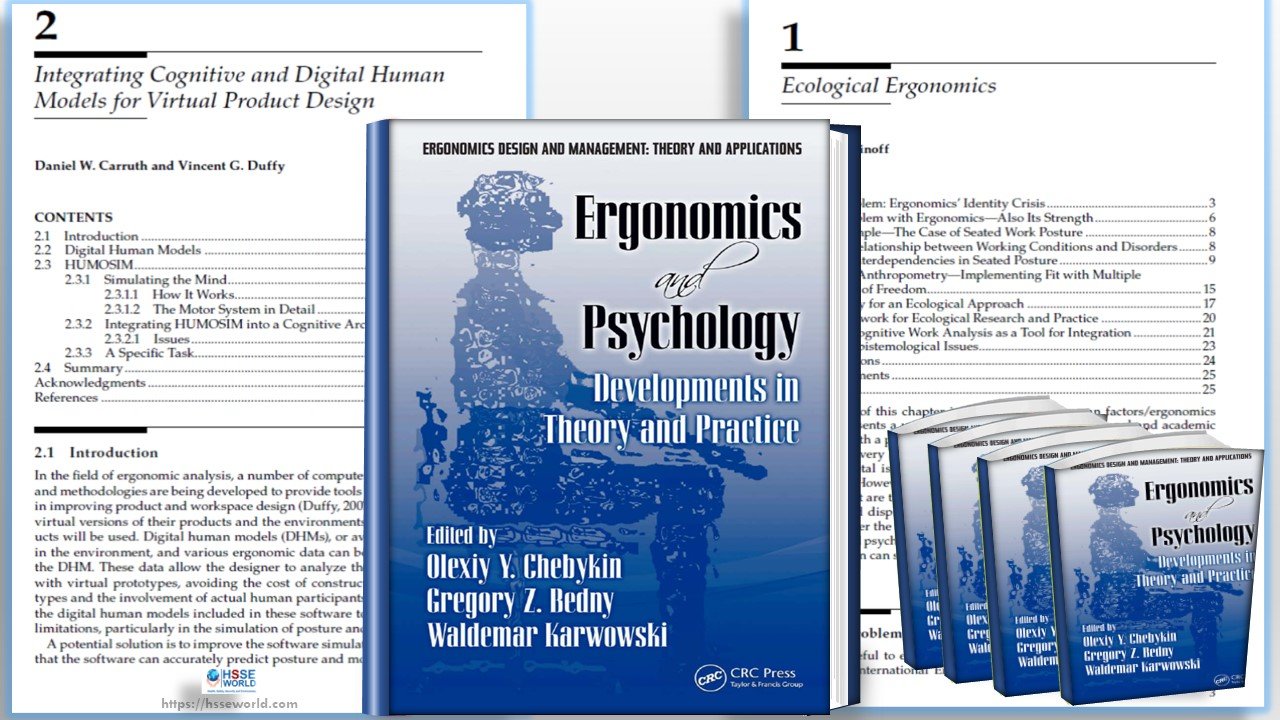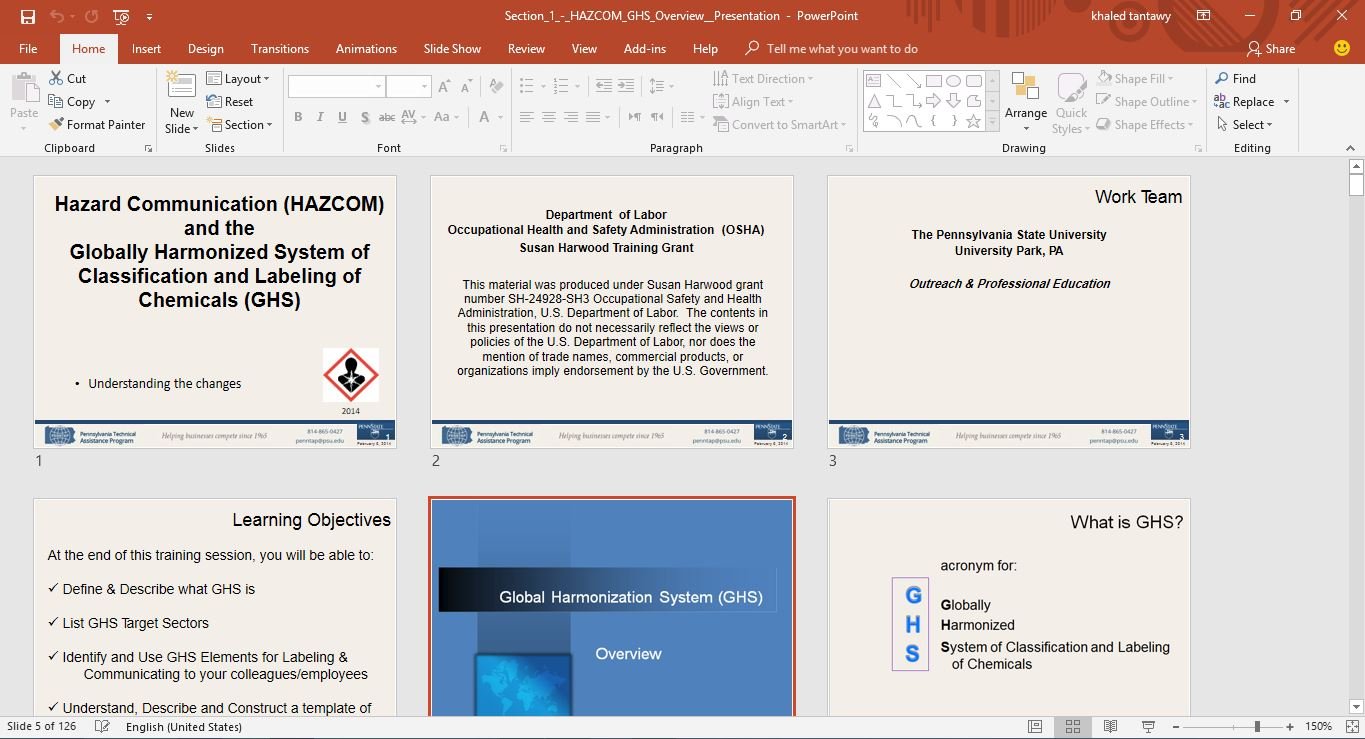A disheartening reality for many safety and ergonomics professionals is that many of their initiatives ultimately become the victims of their own success. Once they accomplish the organisation’s initial objectives, investments in ergonomics and other safety solutions either evaporate or are reallocated elsewhere.

On the other hand, organizations with long-term success in ergonomics view it in terms of a continuous improvement process: risk factors drive the process and a proactive approach to manage risk yields long-term benefits in employee health, safety, enhanced internal and external productivity, and human performance.
Progress can be tracked and quantified using proven manufacturing metrics, such as improved quality (human error reduction), reduced cycle times and overall cost reduction (including labor and employee medical costs).
Here are five keys to make ergonomics initiatives sustainable and critical elements of an organisation’s drive for operational excellence.
1. Present Ergonomics in a Strategic Context
Even as many organizations embrace operational excellence, lean manufacturing or Six Sigma to drive systematic and continuous improvement across the enterprise, ergonomics isn’t necessarily integrated with these initiatives. Nonetheless, ergonomics can be a difference maker: It eliminates waste and operational variances through effective workstation design; it facilitates measurement through the establishment of leading performance metrics, and it enhances productivity by reducing employee risks of developing work-related musculoskeletal disorders.
The tactical aspects of injury prevention involve identifying risk factors, such as awkward postures, high-force applications and high frequency/exposures, as well as their root causes, and designing and implementing solutions to reduce them.
Yet, to achieve sustainability, ergonomics initiatives must focus not only on the design and implementation of approaches for injury prevention or reduction, but on the wider organizational strategic goal of improving human performance across the organization.
Accordingly, in discussing ergonomics initiatives and results, environmental health and safety professionals should seek to position them in the larger context of the operational efficiency and excellence.
2. Establish a Sound Organizational Framework for Ergonomics
Ideally, any and all ergonomics initiatives should be fully integrated with an organization’s strategic imperatives, such as operational excellence and Six Sigma. That begins with leadership’s commitment and ownership of the ergonomics process, and involves the engagement and participation of employees at all levels of the organization.
From the outset, make sure leadership understands and embraces the overall direction of the ergonomics initiative and how it supports the organization’s broader strategic goals. They should recognize the issues you are trying to address, and understand the goals and anticipated short- and long-term benefits of the ergonomics process.
Another key element involves establishing organization-wide accountability. Develop and define site-specific ergonomic roles and responsibilities for individuals throughout the organization, including: operations management; finance; risk management; operational supervisors and employees; office technical and administrative staff; manufacturing engineering and design; human resources; safety team members; ergonomics process owner and subject matter experts (SME); and consultants.
For each function and location, develop a clear picture of the current risk level (by job task and by body part). That will help you establish a baseline for ergonomics risk (for instance, percentage of jobs with high-risk body parts). Identify who owns each ergonomics issue (whether it’s a matter of safe and efficient work practices not being followed or a workstation engineering/design issue), and who is in charge of correcting the problem.
Collaborate with relevant managers and employees to define site-specific goals for team development, pre- and post-injury reduction, and/or productivity improvements. This should also include the establishment and implementation of methodologies to obtain feedback, monitor progress and measure results.
3. Don’t Overlook the Need to Address Operational Pain Points
An enterprise-wise ergonomics risk and opportunity assessment may unveil specific issues that require immediate intervention and remediation. These include jobs with a history of causing injuries, such as those driving workers’ compensation costs. In some cases, immediate actions may be necessary, including:
The development of a return-to-work process.
Creation of basic risk identification tools for supervisors to assess employee work habits and provide job coaching on proper work practices. Notably, engaging supervisors and employees in these measures supports continuous improvement and does not require significant time to implement.
Development of a proactive employee early-symptom intervention process that allows employees to engage onsite specialists who can work with them on biomechanics coaching, work practice adjustments, movement strategies and treatments.
Establishment of site-specific
teams of subject matter experts (SMEs) to lead a more extensive improvement process to assess risks, provide feedback on workstation design and layout issues, and participate in implementing potential solutions to address ergonomic issues in a facility.
Notably, a site-specific team might include: environmental health and safety professionals, loss prevention, maintenance, manufacturing leads, manufacturing engineering or industrial engineering, and human resources (if necessary due to contractual issues).
While the initial goal of these activities may be to equip the site to make immediate improvements, they can serve to build momentum for incrementally larger implementations that will directly impact workers’ compensation costs and lost-time days.
4. Use an Interactive Process to Identify Emerging Needs and Validate Priorities
Effective ergonomics initiatives rely on constant employee feedback and are highly responsive to individuals who report issues related to safety, discomfort, or pain. Because the focus of these activities is on intervening when an employee is having an issue, the solution may not drive immediate cost savings directly related to workers’ compensation claims or lost time. However, significant cost avoidance may result by preventing a claim or employee injury that leads to lost work due to a medical restriction.
In addition to working toward a more proactive process, safety and ergonomics professionals should engage the general engineering groups with respect to the design, specifications and building of new workstations, cells and facilities.
The collective goal of this ongoing interaction is to provide human performance design and risk identification tools that allow designers to assess the current design and find areas of improvement that may have been overlooked.
5. Strive for Continuous Improvement
The ongoing ergonomics process should involve a proactive risk-based approach to identify and address jobs with potential high risks for developing future work-related musculoskeletal disorders.
Prioritize and communicate areas of high-risk versus low-risk work tasks. In this case, a “heat map” may be useful in facilitating a common understanding of tasks that are high-risk, the body parts and the root causes within those tasks contributing to the overall risk.
The ergonomics risk heat map allows the ergonomics professional to proactively manage risks and set a common direction for the types of improvements (short, medium or long-term) required to reduce or eliminate known risk factors.
All solutions should be tested for potential impact in reducing work-related musculoskeletal disorder risk factors. Improvements should also be defined not just for impacting risk factors, but for potential reduction in overall cycle times, improved quality and space savings as a result of redesign.
As part of the final process, successful solutions should be communicated to other parts of the organization. This can accelerate the overall improvement process by reducing the lead time to implement solutions.



